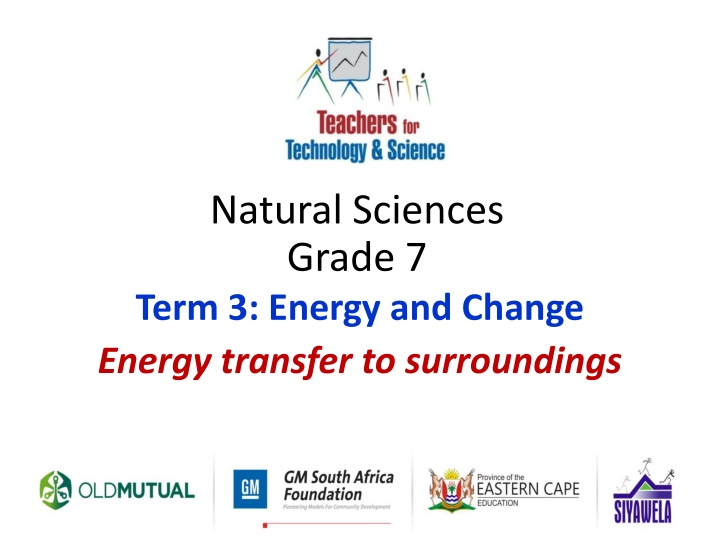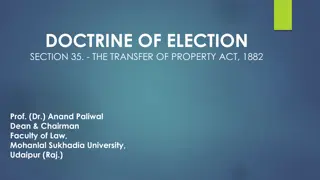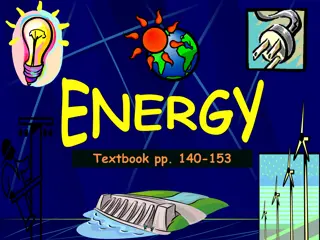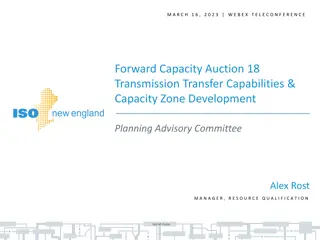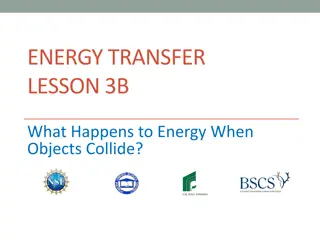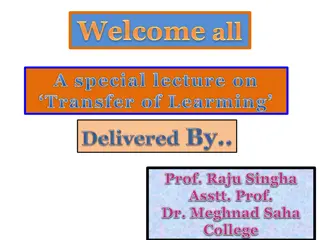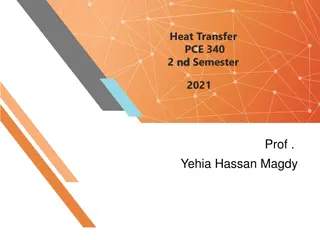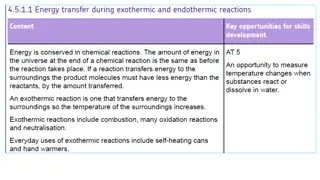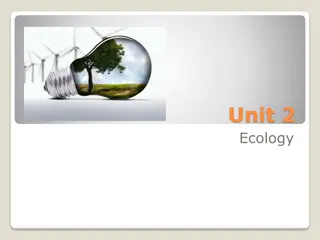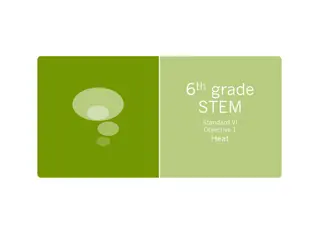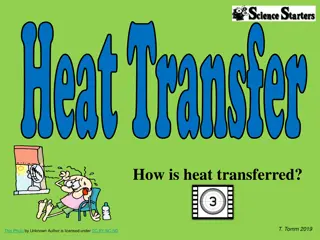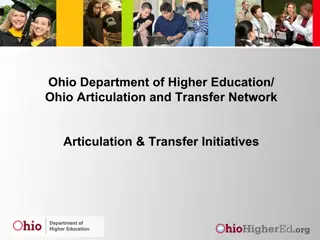Energy Transfer to Surroundings
Energy transfer occurs in various systems, with useful energy outputs and wasted energy in the form of heat. Understanding the flow of energy in machines and devices helps improve efficiency, as seen in examples like light bulbs and power plants. Discover the importance of reducing wasted energy for enhanced energy efficiency in practical applications.
Download Presentation

Please find below an Image/Link to download the presentation.
The content on the website is provided AS IS for your information and personal use only. It may not be sold, licensed, or shared on other websites without obtaining consent from the author.If you encounter any issues during the download, it is possible that the publisher has removed the file from their server.
You are allowed to download the files provided on this website for personal or commercial use, subject to the condition that they are used lawfully. All files are the property of their respective owners.
The content on the website is provided AS IS for your information and personal use only. It may not be sold, licensed, or shared on other websites without obtaining consent from the author.
E N D
Presentation Transcript
Natural Sciences Grade 7 Term 3: Energy and Change Energy transfer to surroundings
Topic 5 Energy transfer to surroundings Useful and wasted energy [part 2] Natural Sciences - Grade 7
Useful energy Energy systems [e.g. mechanical devices and electrical appliances], are designed to provide useful energy outputs. For example: We use a light bulb to light up a dark room, so therefore the light energy can be regarded as the useful energy. Most of the energy produced by the light bulb is in the form of heat. Heat can be regarded as wasted energy. Energy flow in systems In order to improve the energy efficiency of machines and devices we need to determine the amount of: Input energy: This is the amount of energy needed for the device to operate properly. Useful output energy: This is the amount of useful energy produced by the device. Wasted energy: This is the amount of energy that is not used for the required output. It is converted to another form of energy. Natural Sciences - Grade 7
Example of wasted and useful energy Example of wasted and useful energy For example: A 100W light bulb needs 100J of electrical energy per second to function properly, yet it only produces approximately 5J of light energy per second. That means that 95J of heat energy per second are wasted! The useful output energy in a system is always less than the input energy, because we seldom get an energy system that is 100% effective. Some of the input energy is transferred to the surroundings and is not useful. The more input energy converted to useful energy, the greater the energy efficiency of the system. An energy efficient system produces less wasted energy. Natural Sciences - Grade 7
Energy inefficient power plants Energy inefficient power plants Most electricity in South Africa comes from power plants. Only about one third of the energy from the coal is converted to useful energy. By the time the electrical energy reaches us from the power plant, it has already undergone several energy conversions. Every time a conversion occurs, some energy is wasted . This means that it does not reach the point (a home or building). Natural Sciences - Grade 7
Reducing wasted energy Reducing wasted energy We need to reduce wasted energy to improve energy efficiency. This is important as fuel and electricity are becoming increasingly expensive. Did you know? - Energy efficiency of cars: Cars waste about 65% of energy from the fuel in the form of heat. Natural Sciences - Grade 7
Key concepts Key concepts Wasted energy must be reduced in order to save our energy sources such as coal and fuel. The more input energy converted to useful energy, the greater the energy efficiency. In a solar collector, a black dull surface absorbs sunlight. Solar heat is absorbed by copper pipes. Insulating materials trap the heat. The sun can be used to heat water and produce electricity. Energy produced by the sun is called solar power. Heat moves from an area of higher heat to an area of lower heat. An insulator is a material that does not easily transfer heat energy. Natural Sciences - Grade 7
